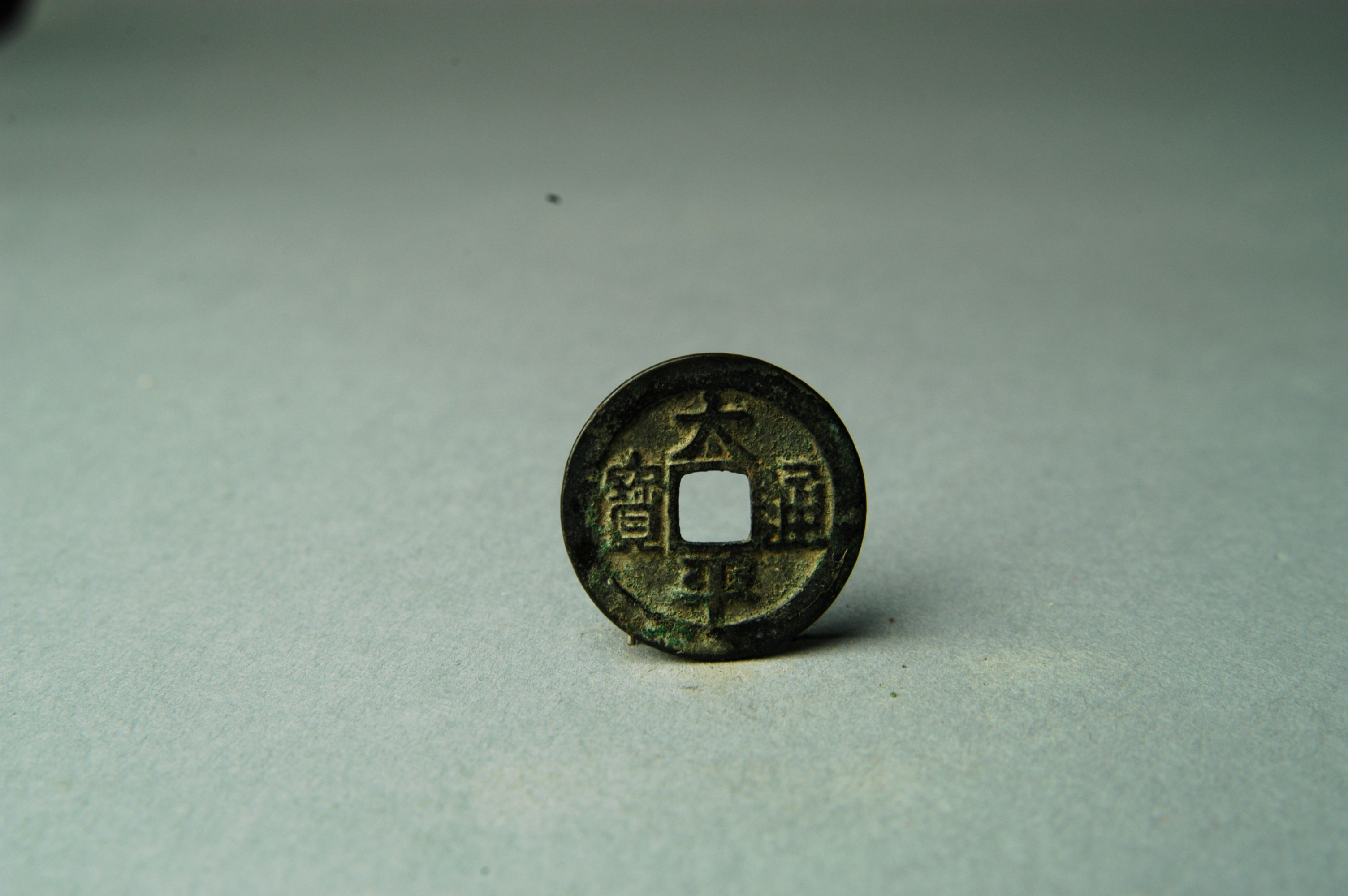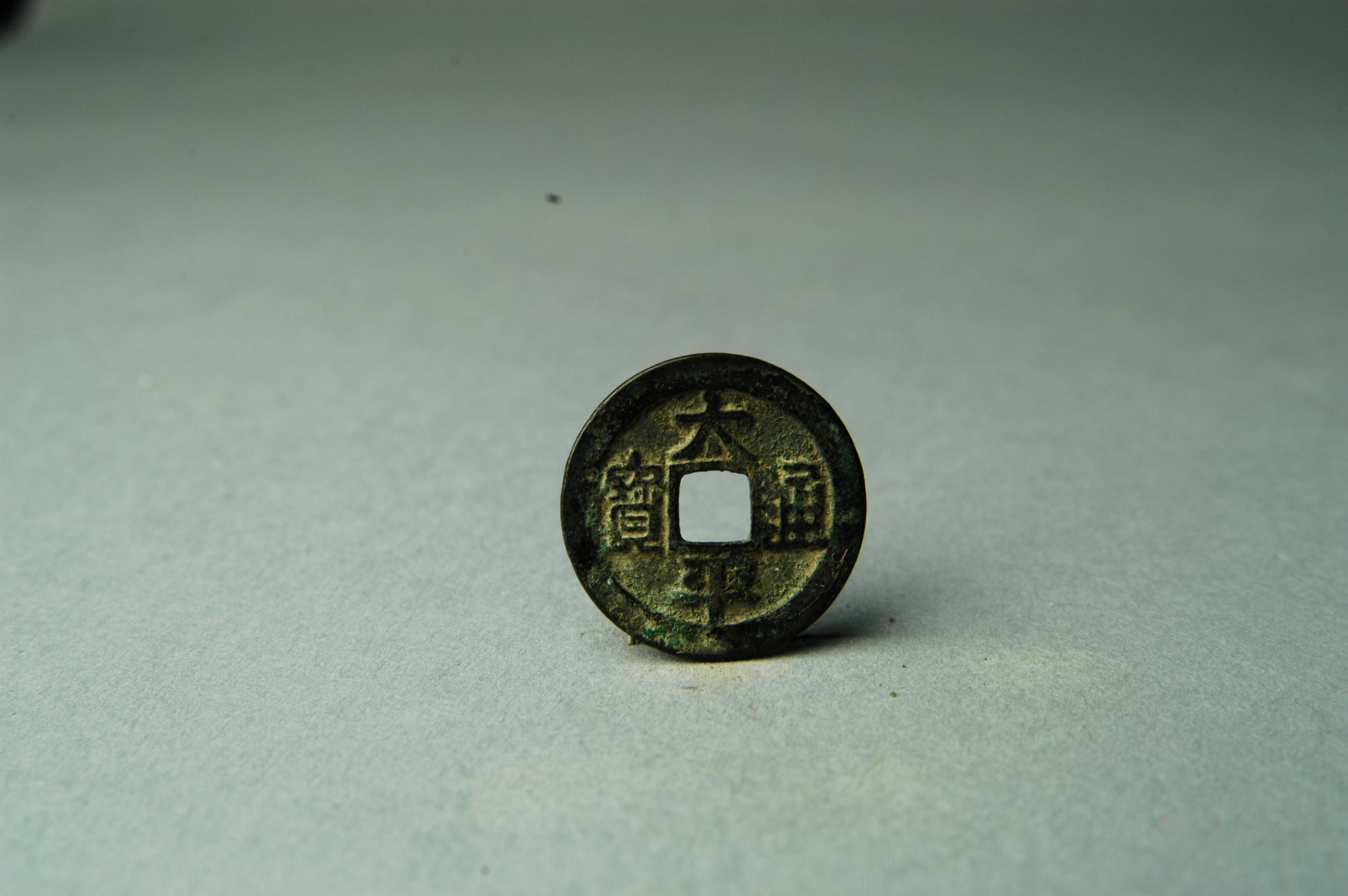
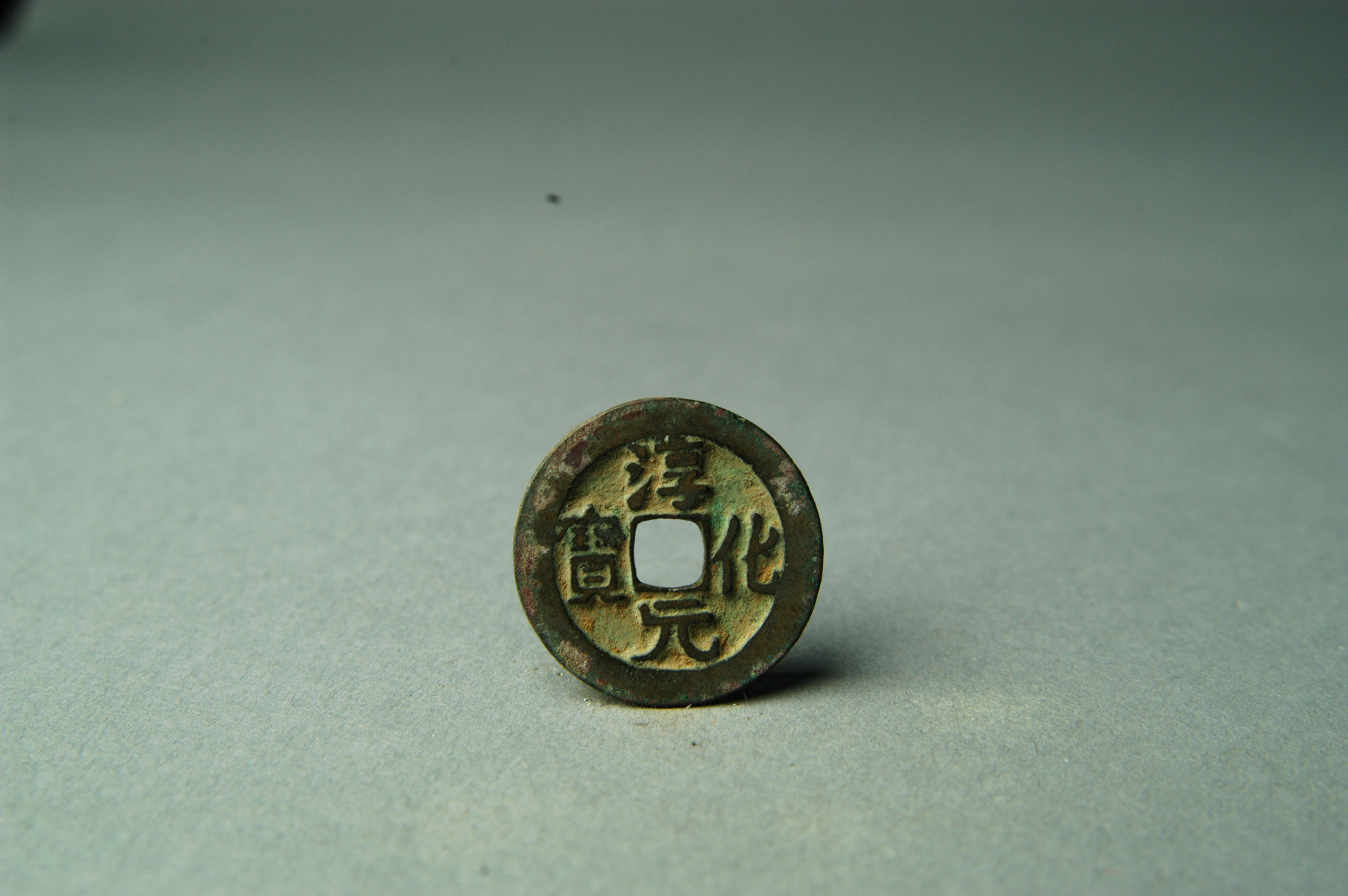
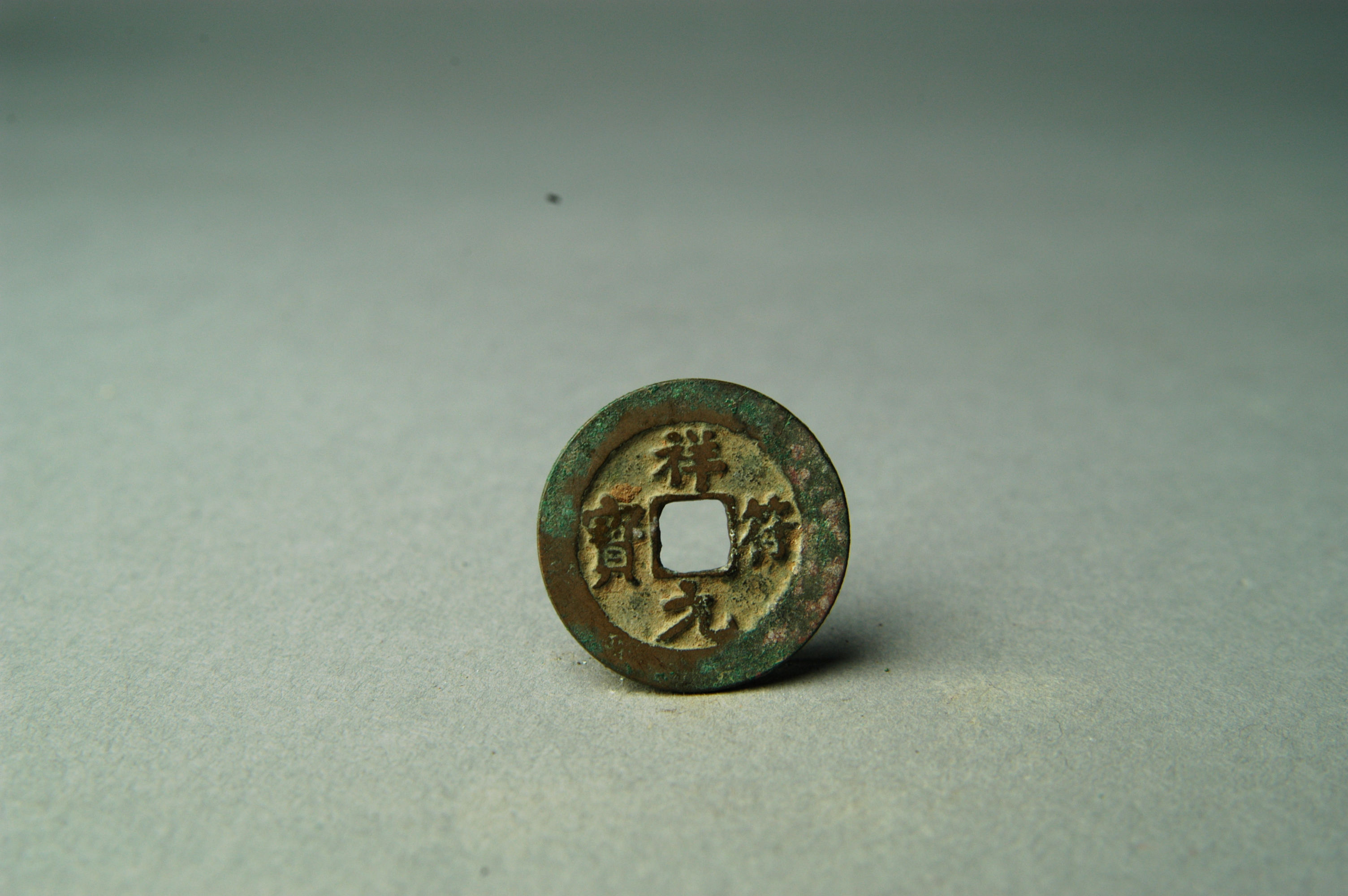
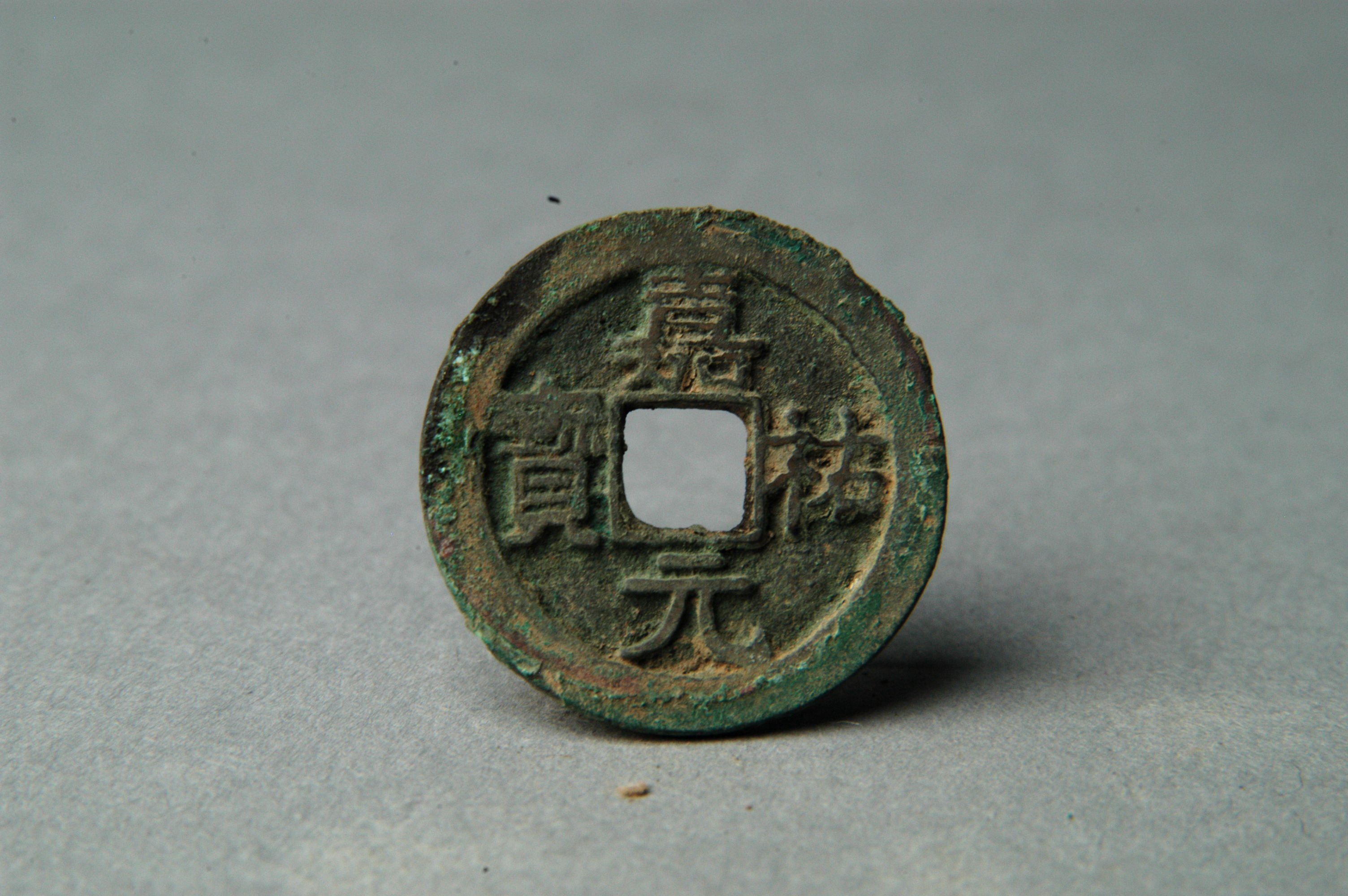
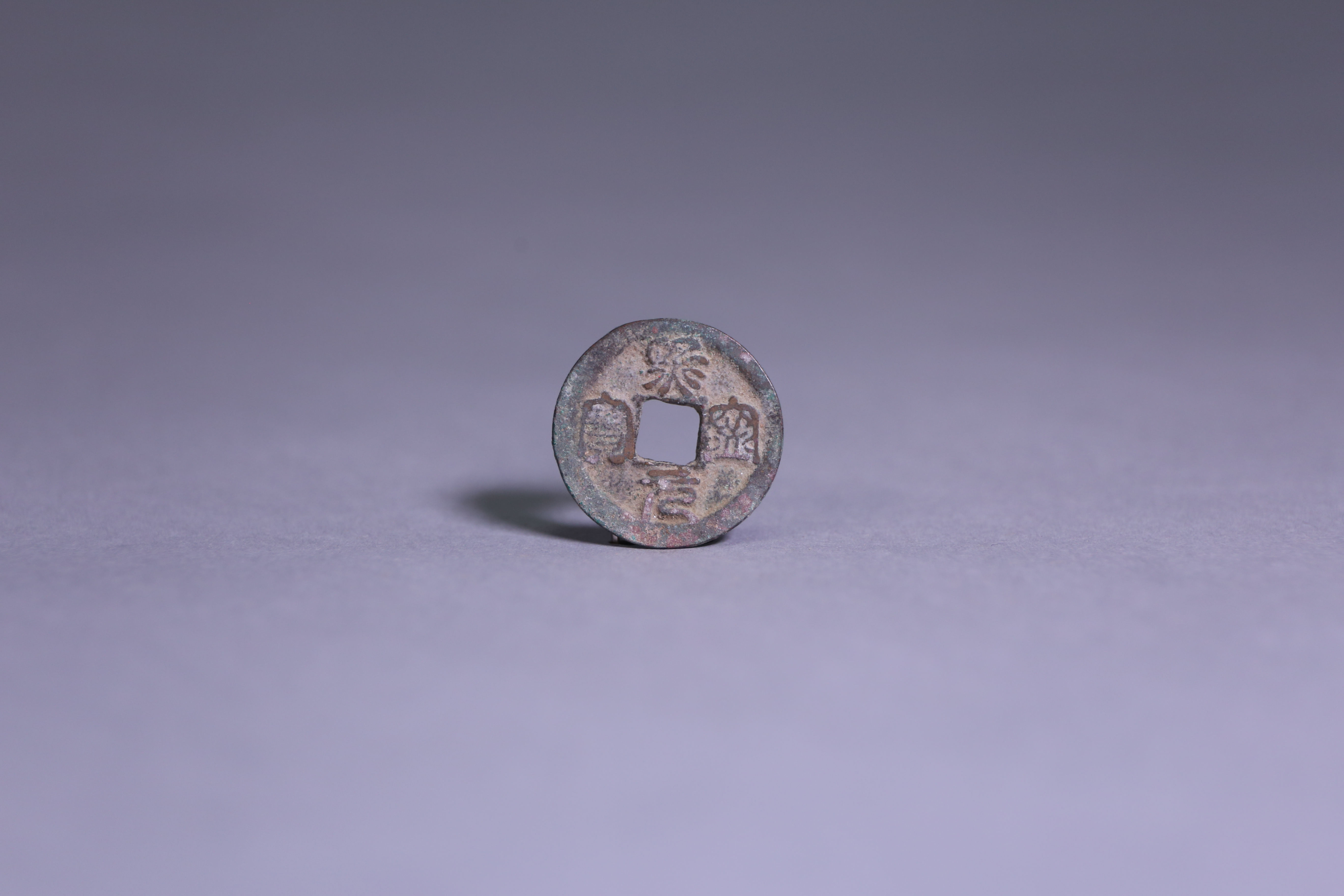
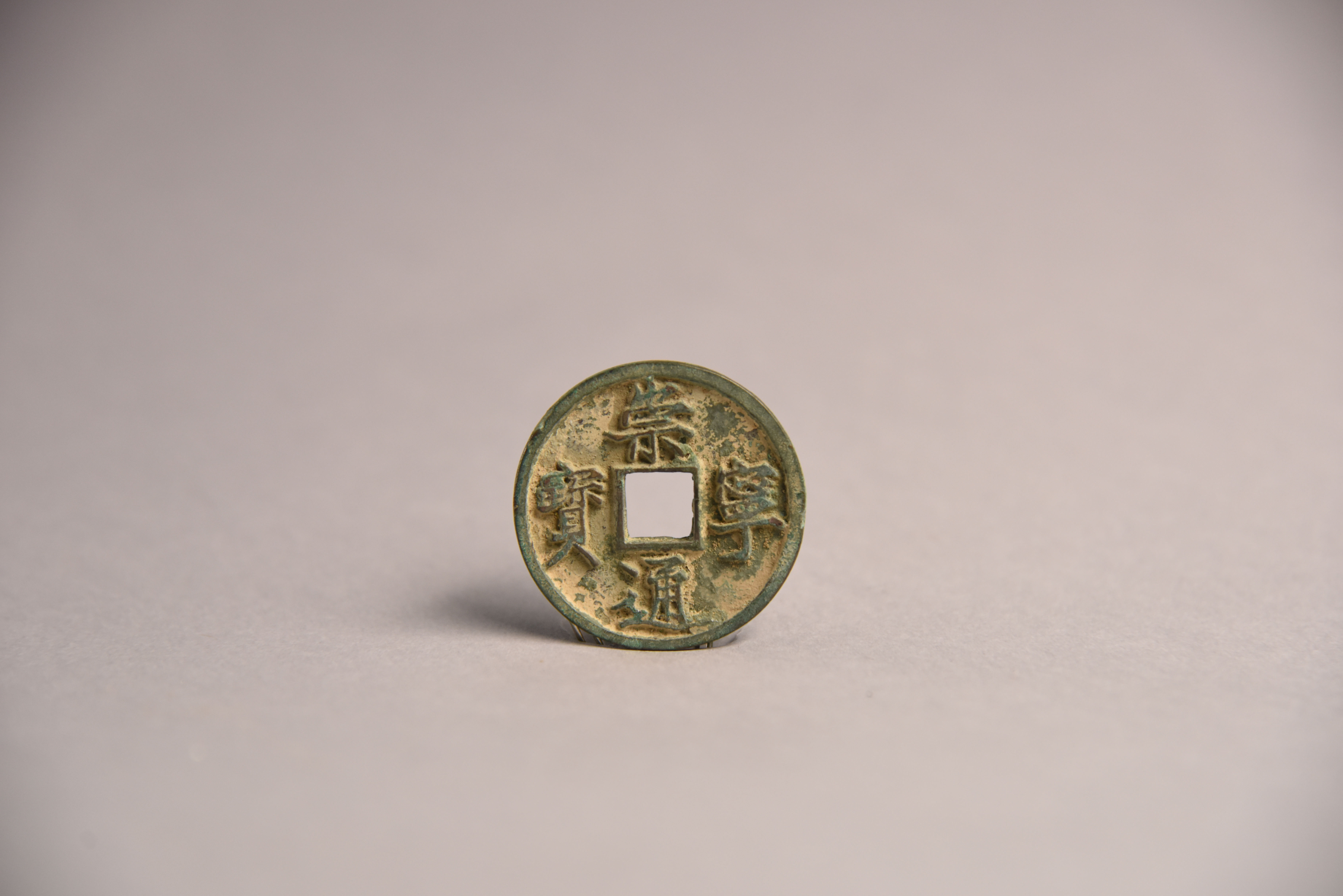
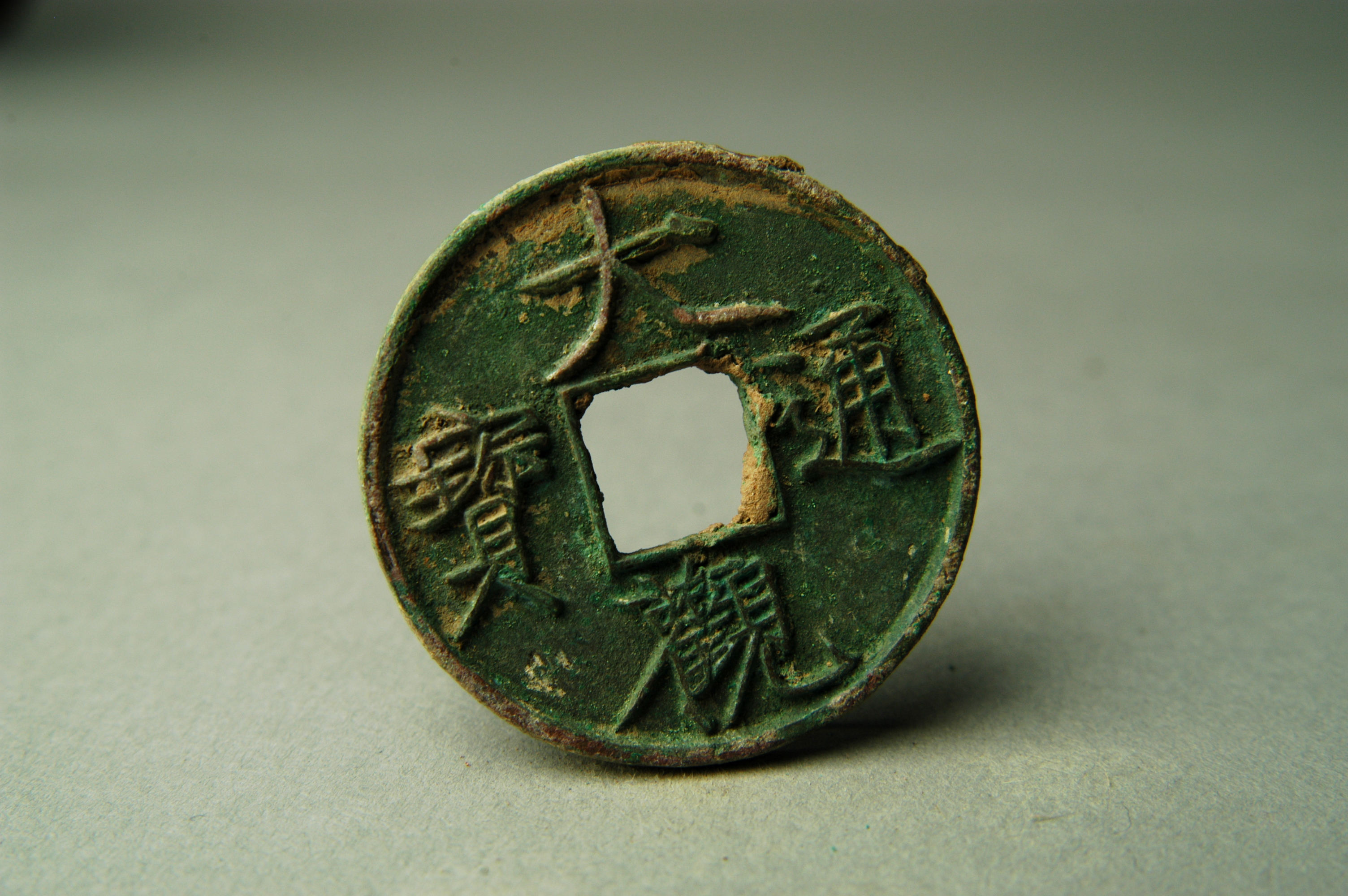
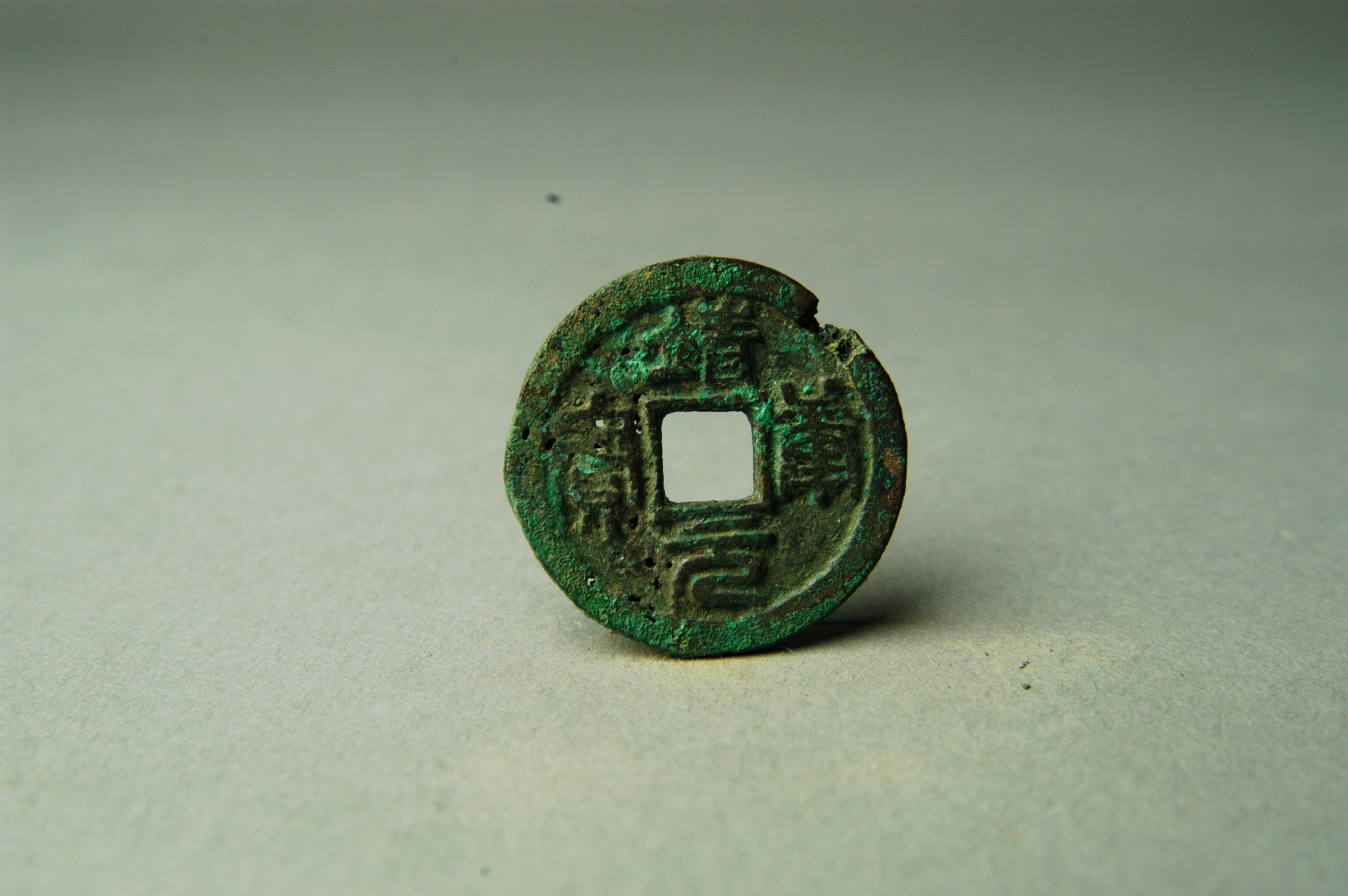
Date: Northern Song Dynasty (960-1127)
Provenance: Unearthed in Chongyang village, Xixia county, Nanyang, Henan province, 1978
Measurements: Diameter: 3cm for each (8 pieces)
This is an assemblage of copper coins of the Northern Song Dynasty, representing the highest level of coin casting during various periods of the Northern Song Dynasty.
Coins named after the emperor's reign are called nianhao coins (reign-title coin). "Tai Ping Tong Bao" was cast during the reign of Emperor Taizong of the Northern Song Dynasty and is the first nianhao coin of the Song Dynasty. "Chun Hua Yuan Bao" was personally inscribed by Emperor Taizong, marking the beginning of emperors personally writing coin inscriptions, known as yushu coins (coins with imperial inscription). Yushu coins were very popular in the Northern Song Dynasty, especially during the reign of Emperor Huizong. Emperor Huizong, known for his high proficiency in calligraphy and painting, created the "slender gold style" regular script, considered the most brilliant script in the history of Chinese calligraphy. Emperor Huizong applied the slender gold style calligraphy to coin inscriptions, with "Da Guan Tong Bao" being a nianhao coin cast during his reign, featuring the slender gold style calligraphy personally inscribed by Emperor Huizong. It is a representative work of the coin calligraphy and casting craftsmanship of the Northern Song Dynasty. During the Daguan era, Emperor Huizong had just turned 30, transitioning from youthful exuberance to restraint and maturity. His calligraphy is characterized by a free and spirited style, conveying a sense of ease and smoothness.

